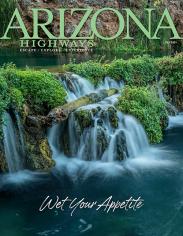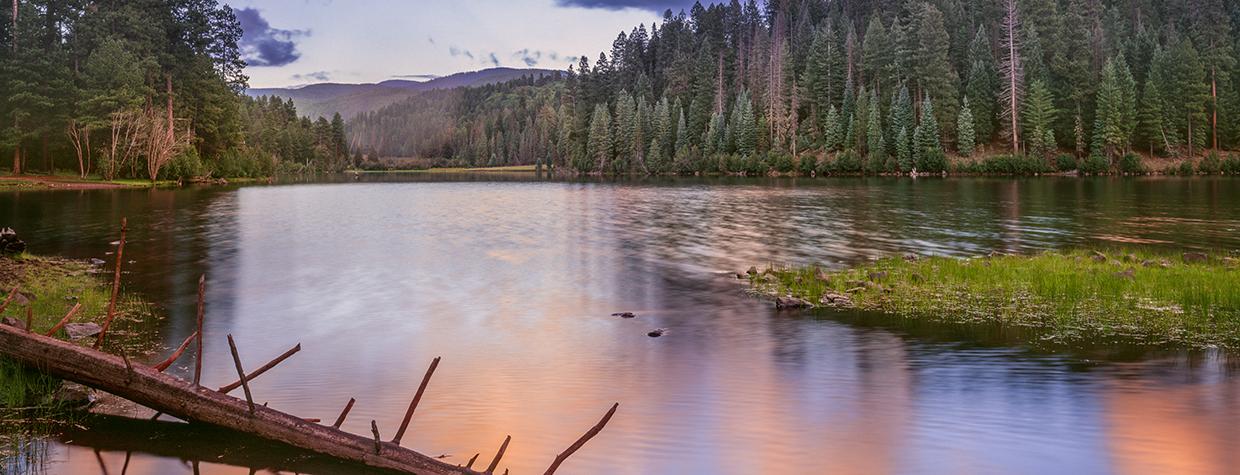Many years ago, I was on assignment for National Geographic for a project about land conservation by Indigenous people. That assignment took me all over Apache lands in Arizona, and my shooting locations included Salt River Canyon and Pacheta Falls, in the White Mountains. Between shoots, I decided to make a stop at Christmas Tree Lake, a small reservoir on White Mountain Apache Tribe land southeast of McNary.
Back then, at least, not many people visited this lake, and my trip also came in the aftermath of a particularly active summer monsoon, which meant there were several dead ponderosa pines blocking the road. Over the years, I’ve learned that certain tools can make landscape photography a lot more successful; in this case, those tools included four-wheel-drive and a tow chain, which I used to clear the trees from the road so I could make it to the lake and get this scenic shot. (I also travel with two air compressors — one for the car’s suspension and one for the tires — and some shovels to dig myself out of a rut if necessary.)
Looking at this photo now, I’m reminded what a different world landscape photography was in the days when everyone was shooting film. This is a 4x5 photo, and when you can’t see your photos until you get back to civilization and develop them, you end up doing a lot of hoping that you got the right images. Now, when I shoot digital photos, my vehicle is my office on the road, and I can do much of my editing in the field, both to confirm my gear is working correctly and to ensure I’m capturing the compositions I want.
Regardless, I’m happy with this photo — particularly the fallen tree in the foreground, which speaks to the conditions that made this location hard to reach.

